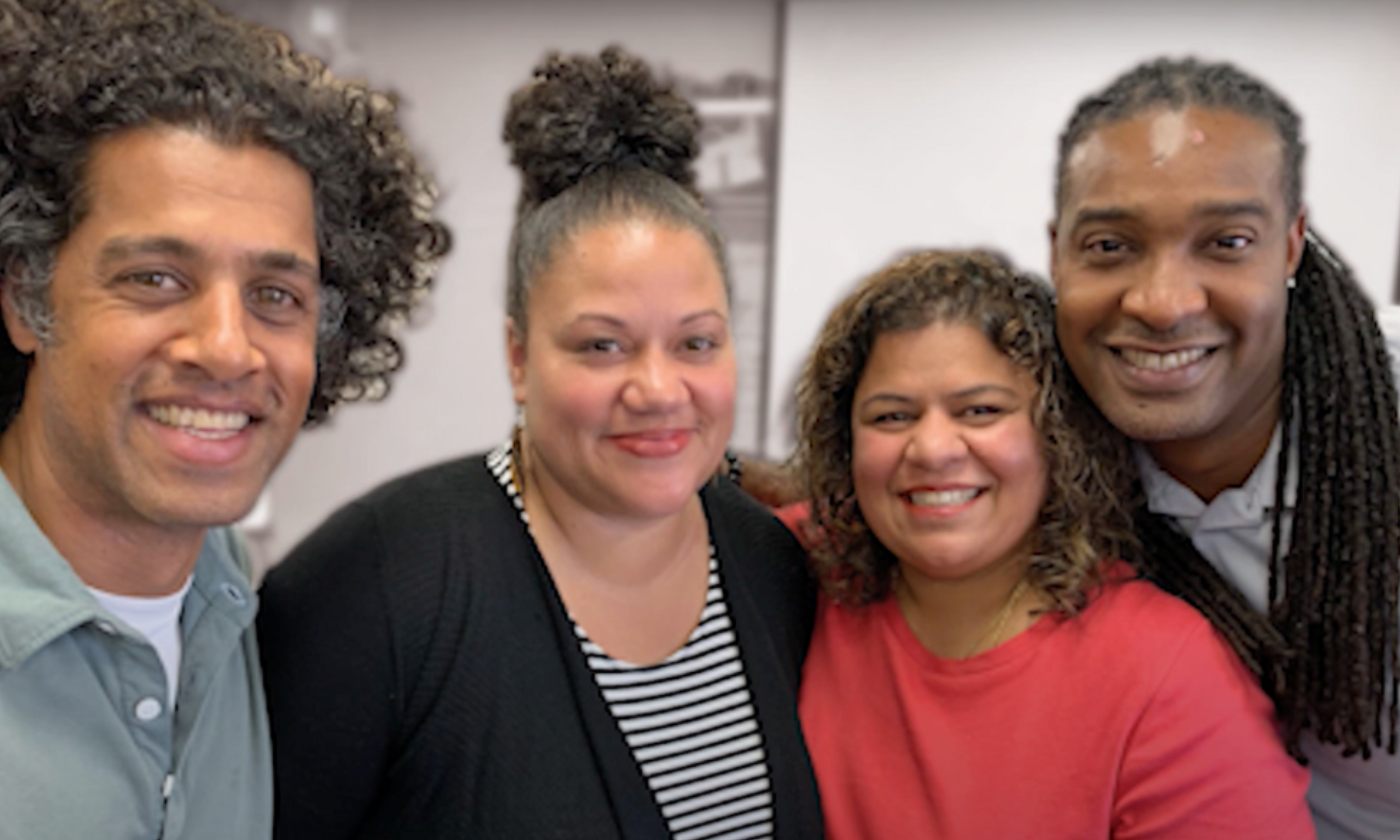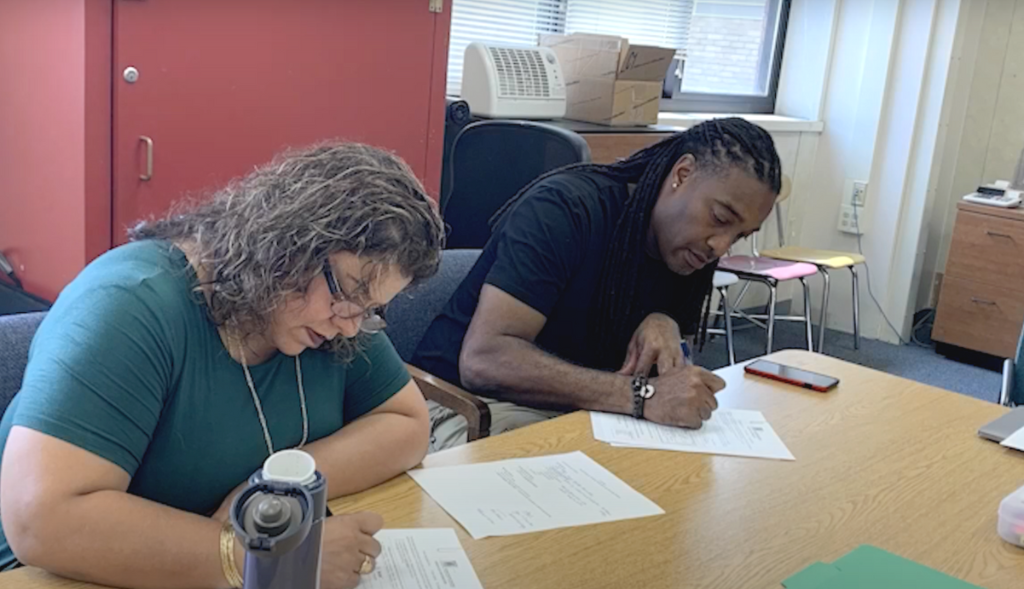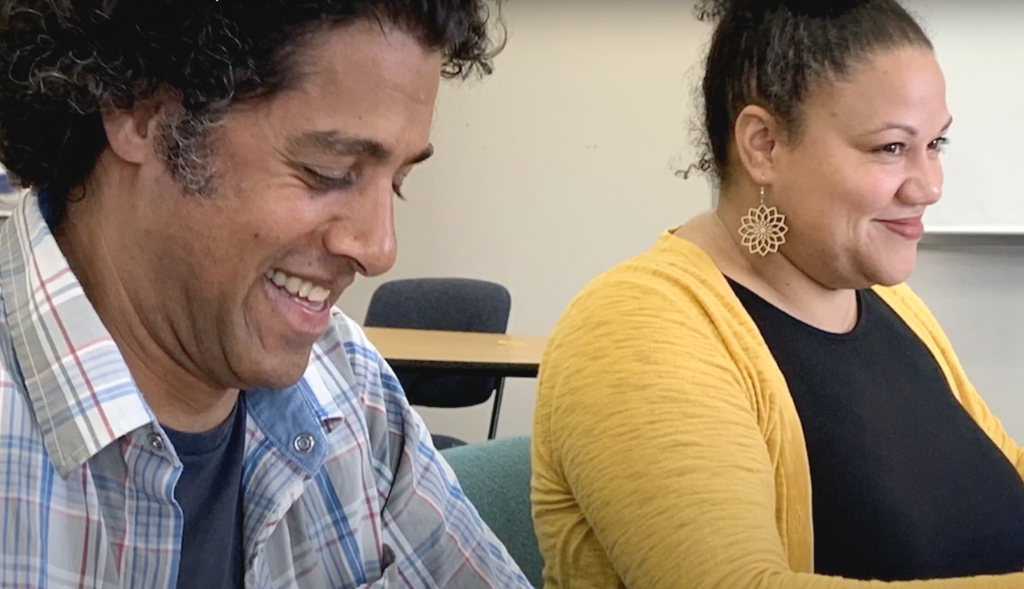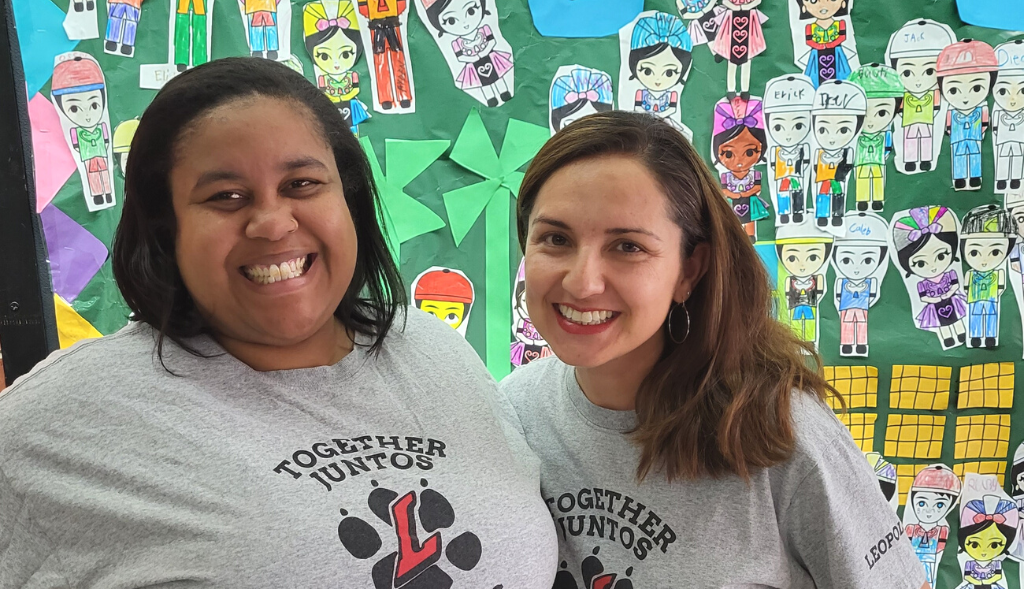
Now in its second year, Partners for Racial Inclusion was created to provide a network of support for new teachers of color by pairing them with veteran educators. The project is a joint initiative of our long-time partner Dane County New Teacher Project and the Dane County Equity Consortium, representing school districts across central Wisconsin.
The idea for Partners for Racial Inclusion grew out of a 2021 youth social justice leadership forum sponsored by the Dane County Equity Consortium, during which students expressed concern about the lack of educator diversity. After a subsequent data review indicated the county was not retaining teachers of color, the Dane County New Teacher Project (DCNTP) and its contributing districts provided funding for the pilot program.
According to Sarada Hanumadass Weber, one of four lead partners who helped design Partners for Racial Inclusion, “We just started talking about what it would look like to create community with new teachers of color [who might be] dealing with the reality of inequities in a very white power system.”
After a call for applications, DCNTP then hired four lead partners, including two elementary teachers, one high school teacher, and a community engagement specialist, to organize support (six to eight hours per week in addition to their full-time duties) for small groups of four new teachers each. From there, Sarada said, though she’s not fond of the metaphor, the founding lead partners started “building the plane while flying it.”
The first step was to get information about the opportunity out to the districts, she said. “We leveraged our relationships with people in our own districts. We got on agendas during teacher induction days, and we sold the program that way. We also contacted principals we knew because we thought it might be really effective if a principal could reach out to a teacher of color and say, ‘Hey this is another support we can offer.’” As a result, 24 new teachers of color from schools across the county signed up to participate in the pilot.
Partners not mentors
Partners for Racial Inclusion is offered outside of the district’s already well-established induction programming, and the founding organizers are emphatic that the program is not about mentoring. New teachers of color who opt in to the program are matched with a veteran teacher for support, but organizers intentionally defined their roles as “partners” instead of “mentors” to avoid any power dynamic.
“In traditional mentor programs, you actually watch other folks teach. While we don’t want to think [of mentoring] as evaluative, whenever someone comes into your classroom, you think, ‘Oh, what do they see?’ So that pressure is immediately gone. And those conversations around race and being ‘the only’ in the building are much easier to have because folks know it isn’t about their teaching … it’s about their lives, their lived experiences. It takes the burden of judgment away from both of us,” said Sarada.
Marisa Flowers, another lead partner, agreed. “We are not evaluators; we don’t report back to principals … or superintendents. It’s a partnership in the sense that we are all going through these things as we navigate the space as educators of color … and if the conversation goes to instruction … then it’s because it just naturally goes there…. We don’t say: ‘Let’s look at your lesson plan.’”
“We are not evaluators; we don’t report back to principals … or superintendents. It’s a partnership in the sense that we are all going through these things as we navigate the space as educators of color … and if the conversation goes to instruction … then it’s because it just naturally goes there…. We don’t say: ‘Let’s look at your lesson plan.’”

Participants in Dane County Teacher Project
As they were thinking about ways to design support options, Sarada said at first the idea was for lead partners to reach out individually to their four new teachers and organize quarterly group events or something along those lines. But what they found was that the new teachers really wanted community.
“They didn’t just want community with me,” she said. “They wanted community with each other. So, we moved from talking one-on-one to meeting as a small group for coffee. It was a very natural progression.”
What was important was that participants set the agenda for both these ongoing more informal meetings as well as organized sessions that brought all the small groups together a few times a year. All conversations were participant driven.
“We asked them: What do you want to talk about? And we took those ideas and then planned the next group session,” said Sarada. “We always tried to center our work in the partners’ [needs] whether it was problems of practice or communication within teams or the administration or navigating Madison or finding the best restaurants…. We’re hiring people of color from Milwaukee, Chicago, Atlanta, Louisville, places that have very different cultural realities than Madison, Wisconsin. So these folks are saying, ‘I don’t know anyone here. My people aren’t here.’ So, we’re trying to connect them.”
“They didn’t just want community with me. They wanted community with each other. So, we moved from talking one-on-one to meeting as a small group for coffee. It was a very natural progression.”
Similar experiences
This feeling of isolation was a common theme for new teachers of color in the county.
“They’re often ‘the onlies’ in their building and experience hostility, disrespect, microaggressions and outright racism as teachers of color.” It is quite common for white colleagues and administrators to doubt or question their expertise, Sarada said.
Jay Garvey Shah, another founding partner, highlighted how we tend to talk about systemic racism in schools in terms of what students experience, but we need to remember that it also impacts teachers of color as well.
“The level of discrimination and systemic racism that I’ve heard about through talking with partners… I think the universality of it [for colleagues of color] … is what has surprised me,” he said.
Administrator expectations are another potential source of harm. New teachers of color are often asked to sit on equity or other kinds of committees, to lead professional learning or to organize and lead affinity groups for students of color, but they are typically compensated minimally, if at all, for this extra work, Sarada said. And when brand new teachers are asked to be a token representative in a process they might not yet understand or to take on additional responsibilities associated with students of color, it presents even larger challenges.
“These teachers want to do these things. They want to support their community,” she said, adding that it’s too much to ask, especially of beginners.
Another issue for many new teachers of color is the additional costs, time and pressure involved in getting their final credentials if they were recruited from out of state or brought in on emergency certificates for high-need positions. As new educators, they are not only learning on the job but are also navigating licensing processes and assessments.
“It’s really been eye-opening…. I was not in tune with this new landscape for educators,” Marisa said.

Participants in Dane County Teacher Project
In supporting new teachers through the program, lead partners report that they have connected around similar experiences and also built relationships and friendships themselves.
“One of the things I’ve appreciated … is recognizing that sometimes my experiences after teaching for 19 years aren’t always that different from my partners’ experiences after teaching for one or two years,” said Jay. “Truly this is a partnership.”
Marisa also values the relationships she’s built across the districts, describing them as an “additional community to just check in with.”
Lead partner Antonio Hoye appreciated the diversity of the teacher partner group, which included Black, Latino, Asian and international teachers. “We’re … coming from different districts, different areas and different walks of life; however, we are still having some of the same experiences. Being able to use this opportunity and now have friends and relationships with different school communities is a big plus,” he said.
The feedback from participants and other stakeholders is also overwhelmingly positive. Sarada estimated that about 90% of pilot cohort teachers stayed in the district, with only a few leaving for personal reasons. In addition, a robust second cohort applied to participate that includes several returning teachers from year one. Leadership across the county also recognized the value of the program.
“Our superintendents voted to support this again,” Sarada said. “They were saying, ‘We know we’re not meeting the needs of our teachers of color. So if we can have other systems of support, this makes sense to us.’”
In its second year, the program hired two additional lead partners, Rachelle Stone and Cinthya Diaz, to meet demand. They said: “Often we have had to create our own affinity spaces within our buildings, assuming that there is more than one BIPOC staff member. This program has filled a void and focuses on building a community that is not confined to one building among BIPOC staff. Our time together is not only to problem-solve and share ideas but to find joy, nurture friendship and create sustainable connections.”
“Often we have had to create our own affinity spaces within our buildings, assuming that there is more than one BIPOC staff member. This program has filled a void and focuses on building a community that is not confined to one building among BIPOC staff. Our time together is not only to problem-solve and share ideas but to find joy, nurture friendship and create sustainable connections.”
Growing this program with and for their colleagues, and sharing the idea with others through DCNTP presentations around the country, has been a source of deep satisfaction for the organizers.
“There was no model,” said Sarada. “So that’s part of the reason it’s been both wonderful — because we got to create it — but also challenging because we’re asking: ‘Are we doing enough? Are we thinking [it through] enough?’” But the response speaks volumes. “We were sort of overwhelmed by the feedback we got. It was a Sunday morning coffee at some place downtown, and that filled people up, filled them with joy.”
She continued. “I think it was sort of revolutionary to say, ‘Hey, you know what? Staff of color might need people in their lives who are educators who are also of color.’ Like, it’s not revolutionary when you think about it for a minute, but it felt very revolutionary,” she said. “It’s about a community. And if you have a sense of belonging and welcoming and care and understanding, then that will help retain and attract staff of color.”

Participants in Dane County Teacher Project
National need
The need for programs like Dane County’s Partners for Racial Inclusion is gaining increasing attention as part of the national conversation on educator diversity. While over half the nation’s student population is non-white, close to 80% of the teacher workforce is. The mounting evidence that students of color clearly benefit from having a teacher of color has schools nationwide scrambling to recruit and retain a more diverse workforce. Numerous studies, however (see for example, FutureEd’s Teachers Like Us, The Education Trust’s If You Listen, We Will Stay and Educators for Excellence’s 2022 Voices from the Classroom survey report), highlight the barriers for teachers of color both in entering the profession and staying in the classroom once they get there.
We applaud the work of organizations like One Million Teachers of Color, Center for Black Educator Development, Latinos for Education and so many others working toward the goal of a teacher workforce that reflects the diversity of our student population.

